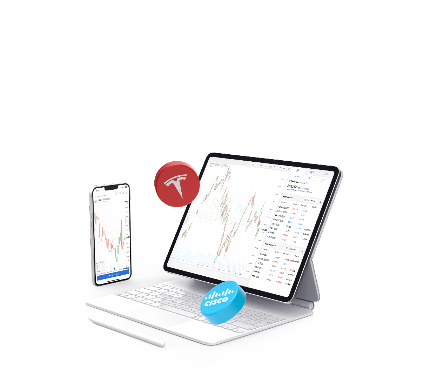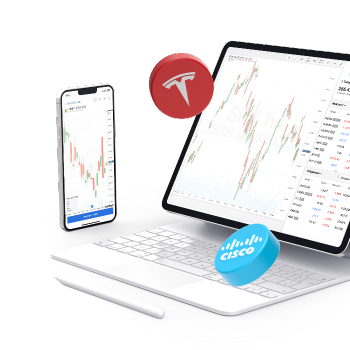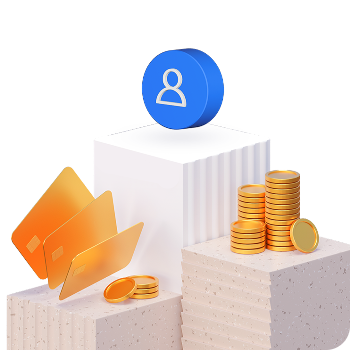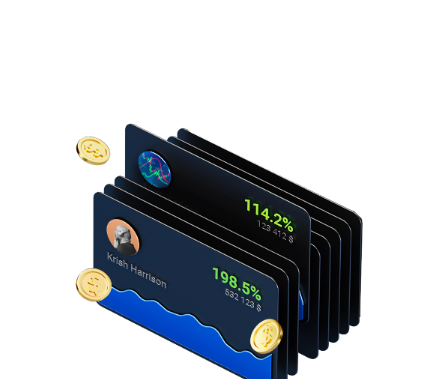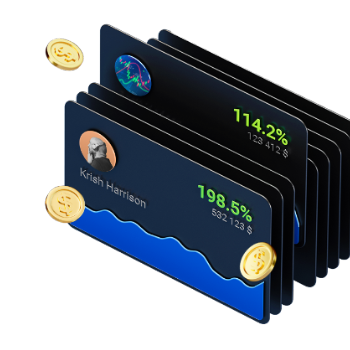What is High-Frequency Trading? Ultimate Guide

14 minutes for reading
Good day, dear readers of our RoboForex Blog!
I think, most of you have heard about High-Frequency Trading or HFT. During the last ten years, it has gained popularity thanks to being high-tech and somewhat mysterious. In this article, we are going to speak about the essence of HFT, its history, its development, its principles and the part it plays on the modern financial markets, as well as about its types and strategies and its perspectives.
The appearance of HFT
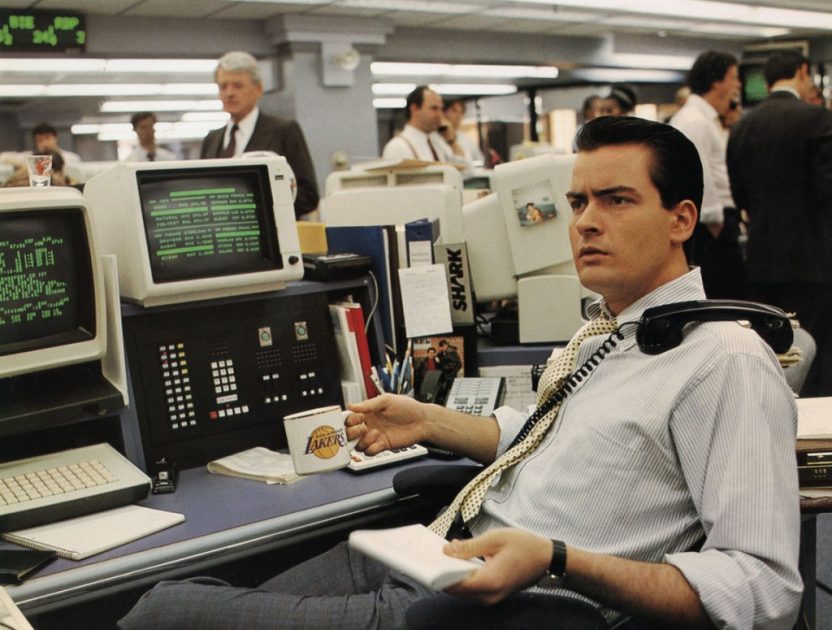
In order to understand the events that led to the appearance of HFT, we should know how the trading process worked in the times of the introduction and flourishing of computer technologies in the 1970-80s. In short, the things went on like this:
- Sales managers of broker companies sold stocks to their clients by phone.
- If the client agreed on the trade, he gave his order orally by phone, again. The noise in the halls and on the platforms quite often was an obstacle to executing the client's order exactly, which was a problem for both sides of the trade. The lack of exactness in trade execution and, hence, unnecessary spendings was one of the first reasons to develop the technology.
- A large broker could execute an order on their own or wait for a rather large block of orders to be executed at one price. It was also a problem because for a small client the prices were always worse than for a large one.
- Then, exchange experts processed the order. At this stage, those experts closed trades for a fee, manipulating order prices, and added up to the client's expenses.
- In the end, the broker notified the client about the execution of the order and charged their commission fee.
At present, the process of broker-client work looks as follows:
- The client analyzes the market situation, sends an order (a pending or a market one) via the electronic network, and almost immediately the order gets to the broker's server.
- The order executes automatically on the trading platform, which is confirmed — again, automatically.
- The broker automatically sends the confirmation of the trade to the client, charging a modest commission fee for their services.
To sum it up, the main reasons for enhancing technology on the market were high transaction expenses, slow circulation of securities, and a high possibility of mistakes due to the manual processing of orders.
What is more, most traders relied solely on their experience and intuition, using neither technical nor fundamental analyses due to the complicacy of calculations. As for now, equipped by more or less powerful computers, traders can become successful rivals to financial companies. By the way, a few words about commission fees: 30-40 years ago the average broker's fee was a hundred times higher than now.
Who was the immediate creator of HFT?
In the summer of 1989, a mathematician named Steve Swanson and a statistics professor Jim Hawkes from the Charleston college founded the Automated Trading Desk company. They started programming algorithms, led by the idea that a profit may be made on the stock market, using the price forecasting formulae that David Whitcomb, teaching economics at Rutgers University, had created. According to the ATD members themselves, a satellite dish received data on quotation updates, thanks to which the system could forecast the price actions for the following 30-60 seconds and automatically bought or sold stocks. The system was called Brokered Order Routing Gateway, or BORG.
The result of the BORG work was not only the information about the most attractive price – the whole trade was performed in a split second which was an unprecedented phenomenon on the that-time market. The average profit per share of ADT was less than 1 cent, but the company’s daily turnover amounted to hundreds of millions of stocks. By 2006, the company traded some 700-800 million stocks a day, which was more than 9% of the volume of the whole US stock market; by that time also, rivals to the company emerged. Those were Getco and Knight Capital Group.
What is HFT?
HFT is a form of algorithmic trading, including a whole range of operations and remaining quite a close sphere of trading. HFT is based solely on high-tech solutions and huge volumes of calculations. After the algorithm was launched, its work cannot be corrected (at least, as long as it makes a profit), this being its characteristic feature in comparison with conventional low-frequency trading which can often be corrected by the trader.
However, if the pattern of the exchange work changes, or some new legislation emerges, or some rivals appear on the scene, a huge database may be lost for nothing.
HF-traders are often criticized for creating chaos on the market; in fact, only some HFT-schemes can do so. HFT is often mixed up with electronic trading. In order to see the difference and understand the essence of HFT, certain market processes are to be discussed in detail.
Algorithmic, or systematic, trading is a general name for the process of using programmed mathematical algorithms for automatic trading; however, not all algorithmic trading is high-frequency.
In 2011, the Commodity Futures Trading Commission (CFTC) enumerated the basic HFT characteristics:
- The system realizes placement, call-off, and changes of the order in less than 5 milliseconds with an almost lacking delay;
- For automatized decision-making, computer programs and algorithms are used; placement, configuring, sending, and execution of orders are performed by the system without trader’s participation in each and every trade or order;
- Colocation services, services of direct access to the market and of dedicated data transmission channels are used; they are provided by exchanges and other enterprises in order to cut down on network and other delays;
- Positions are opened and closed in a very short period of time;
- The daily turnover of the securities portfolio is high and/or the placed orders to executed trades ratio are also high;
- A large number of placed orders is canceled right after the placement or several milliseconds later;
- The trading day is finished without open positions.
The main difference between an HF-trader and a conventional one is in the fact that the former may trade quicker and more often, while the time of portfolio holding is very short, which reduces the risk of losses due to unpredictable volatility or postponing of the trade. The operation of an HF-algorithm takes a millisecond, which is incomparable to the speed of traditional trading.
The evolution: from traditional trading to HFT

Those relying on technical analysis in trading were against HFT. Technical analysts of the past would try to find repeating patterns on price charts. Modern analysts look at prices together with the current market events or market conditions in order to get a full picture of their possible further movements.
Technical analysis was on its peak when trading technologies were in their fetal state while the complexity of trading strategies was much higher than today. The speed of information and quotations spreading was also low.
However, nowadays, the methods and indicators of technical analysis may quite often be part of the patterns that use quanta for creating HFT strategies.
The fundamental analysis had spread at the market by the 1930s. Traders noticed that future money flows, such as dividends, influence market price levels. On stock markets, fair prices are still often set on the basis of the forecasts of the future profitability of the company.
On Forex, traders-analysts mostly rely on macroeconomic patterns for calculating fair prices on the basis of inflation information, trade balances of different countries, interest rates of central banks and other economic indicators. Some aspects of fundamental analysis are also used for building HFT systems. For example, the date and time of news publication are normally known beforehand while the information necessary for making a decision is revealed at the announcement of the piece of news. So, nowadays it is understood that in such a situation those systems make the maximal profit that reacts to changes faster.
What is HFT today?
In 2009-2012 the profit from HFT shrunk almost 5 times, from 5 billion to 1.25 billion USD. When the liquidity level fell in 2016, many medium-size HFT companies left the market. For the success of an HFT system, signal generators, algorithms optimizing order execution, risk-management algorithms, portfolio optimizing algorithms, etc. are required. HFT systems perform the whole range of tasks from picking up trading instruments to executing orders, doing it quicker and better than a trader.
Nowadays, not all markets are suitable for HFT. According to the Aite Group research, the stock market is the most invaded by algorithmic participants who create more than 50% of its turnover; on the futures market, the turnover of algorithmic traders is 40% of the whole, while on Forex, options market or the market of securities with fixed revenue the numbers are much smaller.
Algorithmic trading is more efficient than that carried out by living people; algorithmic funds stably demonstrate better results than traditional ones in the times of crises.
The Credit Suisse bank has published a research of “the true role of HFT in the ecosystem of the modern financial market” explaining how HFT changed the situation on the world exchanges.
According to Credit Suisse, the volume of trades created by the work of trust managers and investors, both active and passive, on the US stock market virtually has not changed during the last decade (3-4 billion stocks a day).
At the same time, the general volume of trades since the crisis of 2008 has grown more than 2 times, which is connected to the development of HFT. The activity of HFT-algorithms helps connect people on the financial market, decreasing the time of waiting for a contractor. The development of HFT has influenced the size of spreads as well. The spreads of the stocks of large companies have decreased, while those of the medium-size companies increased, on the contrary. This signifies the demand from HF-traders for well-known liquid companies.
Increased volatility of the stocks of both large and small companies has been seen during the trading day since a couple of years ago. At the beginning of the day, the stock prices of moderate-size companies change more actively – this happens because it takes longer to figure out the fair (for the time being) stock price for such companies. However, by the end of the day, such stocks normally become quieter than those of larger companies.
On the other hand, the stocks of larger enterprises traded more actively on the market tend to change the price repeatedly and quickly inside a spread at the end of the day. Both these phenomena are connected to HFT.
As a rule, HFT-strategies are aimed at making a profit on the inefficient spots of the market and not on large price movements. This leads to, among other things, a decrease in the volatility of the stock prices of big companies, most often used for HFT.
Types of HFT-strategies
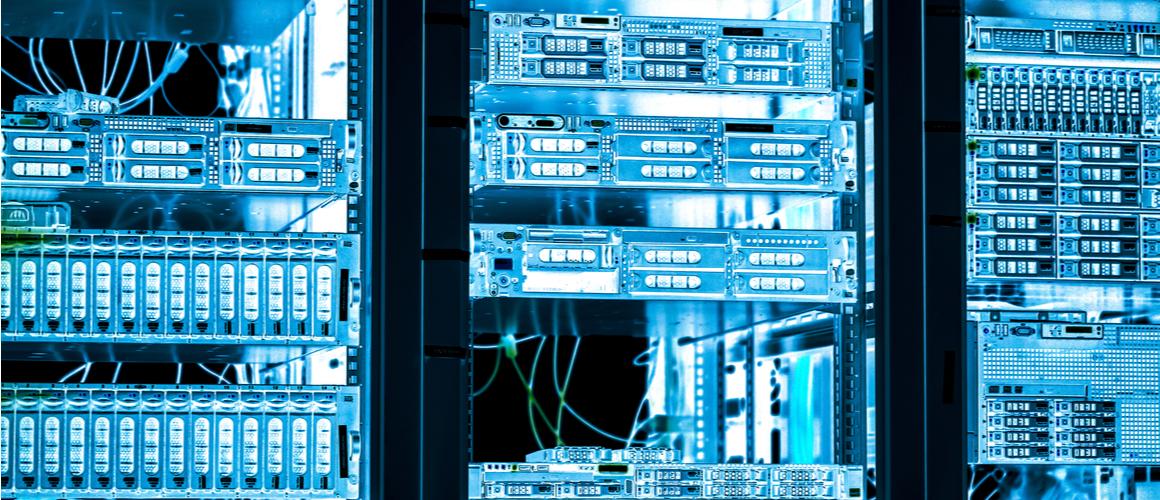
Market-making
This strategy is about increasing rivalry between investors and traders and narrowing spreads in different assets by placing orders on this or that side of the price spread. Hence, new territories are the most profitable for such strategies; moreover, the bigger the spread, the more profit the strategy will yield. As a result, the liquidity of the instrument on thew platform increases, the spreads narrow, and new investors are attracted to the platform. In this case, the profit from HFT is generated out of the difference between the price of the demand and supply. Apart from this, it is not rare for market-makers to charge an additional fee for increasing the liquidity of the platform; in fact, the strategy itself might even be slightly losing, but thanks to the fees paid by the platforms the trader will earn money.
Front Running
The algorithm is based on the speedy closing of a trade as soon as profitable conditions are detected. The work of the algorithm can be split up in two periods: monitoring all conditions for placing an application and the action when the application is being processed. First, all large bids (demand prices) higher than the stated price are analyzed, and if the system finds such a volume, the robot places an application one step higher than that order. If the order is called off, the application sent in by the robot is also called off and the monitoring goes on. If the volume moves on, the robot also does so, remaining a step before the volume. The strategy relies on the idea that before a large application is fulfilled, the price will bounce several times.
Momentum Ignition
Momentum ignition strategy is used by traders to provoke market participants on making operations quickly. At the moment of a fast movement, the difference between asks and bids increases, creating good conditions for making a profit.
For example, the ask price is $100, and the bid price is $100.01; then the ask price becomes $99, while the bid price changes to $100. So, the bid price equals the previous ask price, and the execution of the last remaining asks will let the trader sell the stock at $100 in the end.
Statistical Arbitrage
It is a neutral market strategy making a profit on any inequality on the market. The strategy is based on the search for discrepancy of prices emerging from various news that influence the market. Before some meaningful events, the HFT algorithm tracks the prices and trade volumes on various exchanges, searching for abnormalities. The trader receives an opportunity to react to the movement before the publication of the news and makes a trade. The essence of HFT via statistical arbitrage is in finding discrepancies in the prices of the same instruments on different markets.
Latency Arbitrage
It helps make a profit thanks to early receiving the data on financial instruments. In order to get this advantage, traders place their computers with the algorithms as close as possible to the exchange server, possibly in the same room. Financial instruments on different platforms are connected, and price fluctuations on one exchange influence the other. During trading, the information cannot be transmitted at once; for example, the distance between Chicago and New York is 1200 km. It takes some 5 milliseconds to cover. Robots on the New York platform receive the information with a delay. Latency Arbitrage is aimed at making a profit on receiving the data quickly. Thanks to colocation (i.e. placing the traders’ computers at the same premises with the core computers of exchanges), HF-traders receive important information some milliseconds before other market players.
Liquidity Detection
This strategy implies robots trying to detect large applications and those hidden from normal platforms and automatized systems before the start of trades. In order to do so, they sell small applications to the market, track the time of their execution and thus decide when a large trade is going to happen.
Tape Reading
This strategy tracks all the events on the stock market, such as volumes and the quotations. This helps gather a lot of important information. Monitoring all the information (about certain stocks) and all significant events (company news, reports, macroeconomic data) helps detect abnormalities in the trade volumes and stock prices. In the end, all collected and analyzed information allows and HF robot to figure out the patterns before the release of official news.
Who uses HFT?
Generally, HFT users may be divided into 4 categories:
- independent prop trading companies;
- broker subsidiaries;
- hedge funds;
- large banks and investment structures.
This is due to several factors:
- high processing powers are required;
- structures have to be optimized and the HFT-equipment installed near the locks of the exchange according to the FIX/FAST protocol;
- high-level programming languages, such as C++, Java, etc., are used;
- large investments are necessary.
All the above together is not available to a usual trader regardless of their finances or desire. Many call HFT infrastructure a monopoly on the stock market, requiring corporate connections and a special position.
